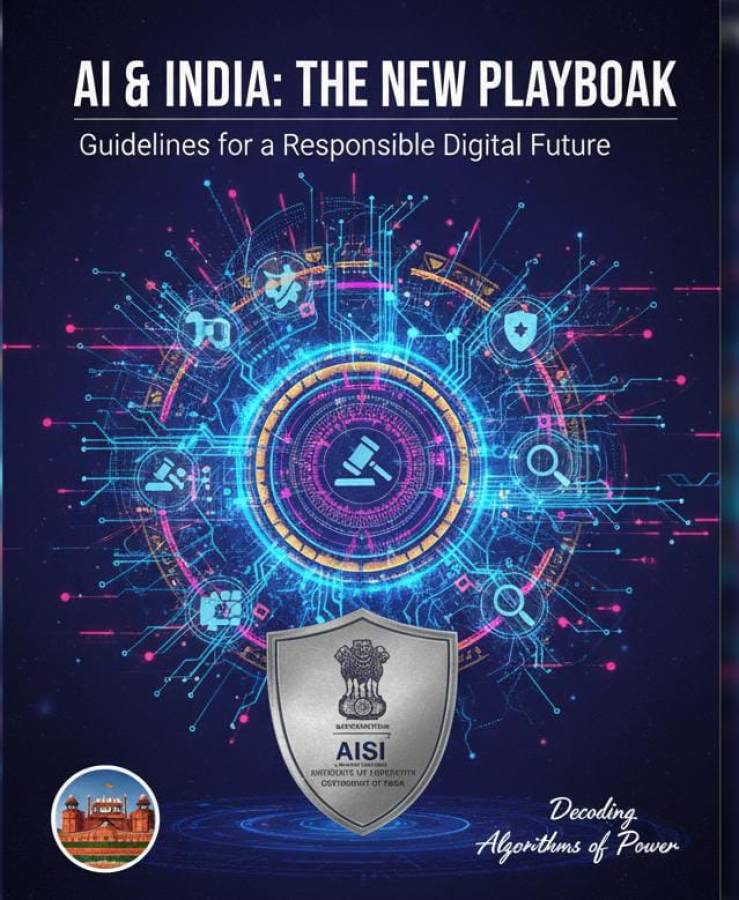
Artificial Intelligence (AI) is no longer just a futuristic concept whispered about in tech circles—it is rapidly transforming how we live, work, and make decisions. From chatbots and automated hiring tools to healthcare diagnostics and financial forecasting, AI has entered every layer of our professional and personal lives. Recognizing this sweeping change, the Indian government has now stepped forward with an important development like a regulatory roadmap for AI governance.
This roadmap, recently unveiled by a government-appointed committee, lays out a structured plan for how India should build, deploy, and monitor AI systems responsibly. For working professionals across industries, especially those in technology, finance, healthcare, media, and education, this is a crucial turning point. Understanding how AI will be regulated will shape the way we work, innovate, and even make ethical decisions in the coming years.
Why India Needs AI Governance Now
India is among the world’s fastest-growing AI markets. The NITI Aayog estimates that AI could add nearly a trillion dollars to the country’s economy by 2035. But with opportunity comes risk. The rapid spread of generative AI tools, deepfakes, data privacy breaches, and algorithmic bias has created new ethical and legal dilemmas.
The AI Regulatory Framework Committee, appointed by the government, was tasked with studying these challenges and identifying gaps in the existing laws. The committee’s report highlights that while India’s Digital Personal Data Protection Act (DPDPA) and Information Technology Act provide some degree of protection, they are not equipped to handle the complex, evolving nature of AI systems.
That’s why the committee proposes a layered governance model, one that balances innovation with accountability. It aims to ensure that AI systems remain transparent, safe, and aligned with human values.
Key Takeaways from the AI Roadmap
- A Dedicated AI Governance Body:
The committee recommends setting up an independent institutional framework—possibly a national AI authority—to oversee the ethical development and deployment of AI. This body would monitor compliance, certify high-risk AI systems, and set standards for responsible use. - Risk-Based Classification of AI Systems:
AI tools will be classified based on the level of risk they pose—low, medium, or high. For example, an AI used in customer service chatbots may be considered low-risk, whereas AI systems in healthcare, policing, or credit scoring will likely be tagged as high-risk and subject to strict scrutiny. - Accountability and Transparency:
Developers and companies deploying AI will be required to maintain transparency reports, ensure their algorithms are explainable, and provide clear information about how decisions are made. This step is aimed at reducing “black box” systems—AI models that make decisions without human-understandable reasoning. - Human Oversight and Safety Measures:
Human involvement remains central. The framework stresses that human oversight must be built into all AI systems, especially in areas involving sensitive data or life-altering decisions. It also emphasizes robust safety testing before public deployment. - Ethical Guidelines and Fairness:
The roadmap encourages the adoption of ethical principles—fairness, inclusivity, and non-discrimination. AI systems must be trained on diverse and unbiased datasets to prevent discrimination on grounds of gender, caste, religion, or socioeconomic status.
What This Means for Working Professionals
For India’s working professionals, the AI roadmap is more than a policy document. It’s rather a wake-up call. The future of work will increasingly depend on how well we understand and adapt to AI-driven systems.
- Tech and IT professionals will need to familiarize themselves with responsible AI design, data governance, and compliance frameworks.
- HR and management teams must learn to identify and mitigate bias in AI-powered recruitment or performance tools.
- Healthcare workers and financial analysts will have to ensure human judgment complements algorithmic recommendations.
- Educators, media professionals, and content creators must stay alert to the risks of misinformation, plagiarism, and copyright violations amplified by generative AI.
The roadmap also signals that companies will soon be legally responsible for how they use AI. It means professionals working in these organizations will need to be aware of compliance requirements ranging from data protection to algorithmic transparency.
India’s Chance to Lead Responsibly
Globally, countries are moving fast on AI regulation. The European Union has already finalized its AI Act, and the United States has introduced AI Safety and Rights frameworks. India’s roadmap seeks to find a middle ground—encouraging innovation while protecting citizens from misuse.
The approach is not just about control bit trust. As the committee notes, building public confidence in AI will be key to unlocking its full potential in sectors like education, agriculture, and governance.
By establishing clear guidelines, India is sending a message that technology must serve humanity—not the other way around.
Staying Informed and Empowered
As AI continues to reshape the workplace, professionals cannot afford to remain passive consumers of technology. Understanding these regulatory shifts is essential—not just for compliance but for ethical, informed participation in the AI-driven economy.
Whether you are a software engineer, policy analyst, teacher, or journalist, the message is clear: stay aware, stay adaptable, and stay human in the age of intelligent machines.




















